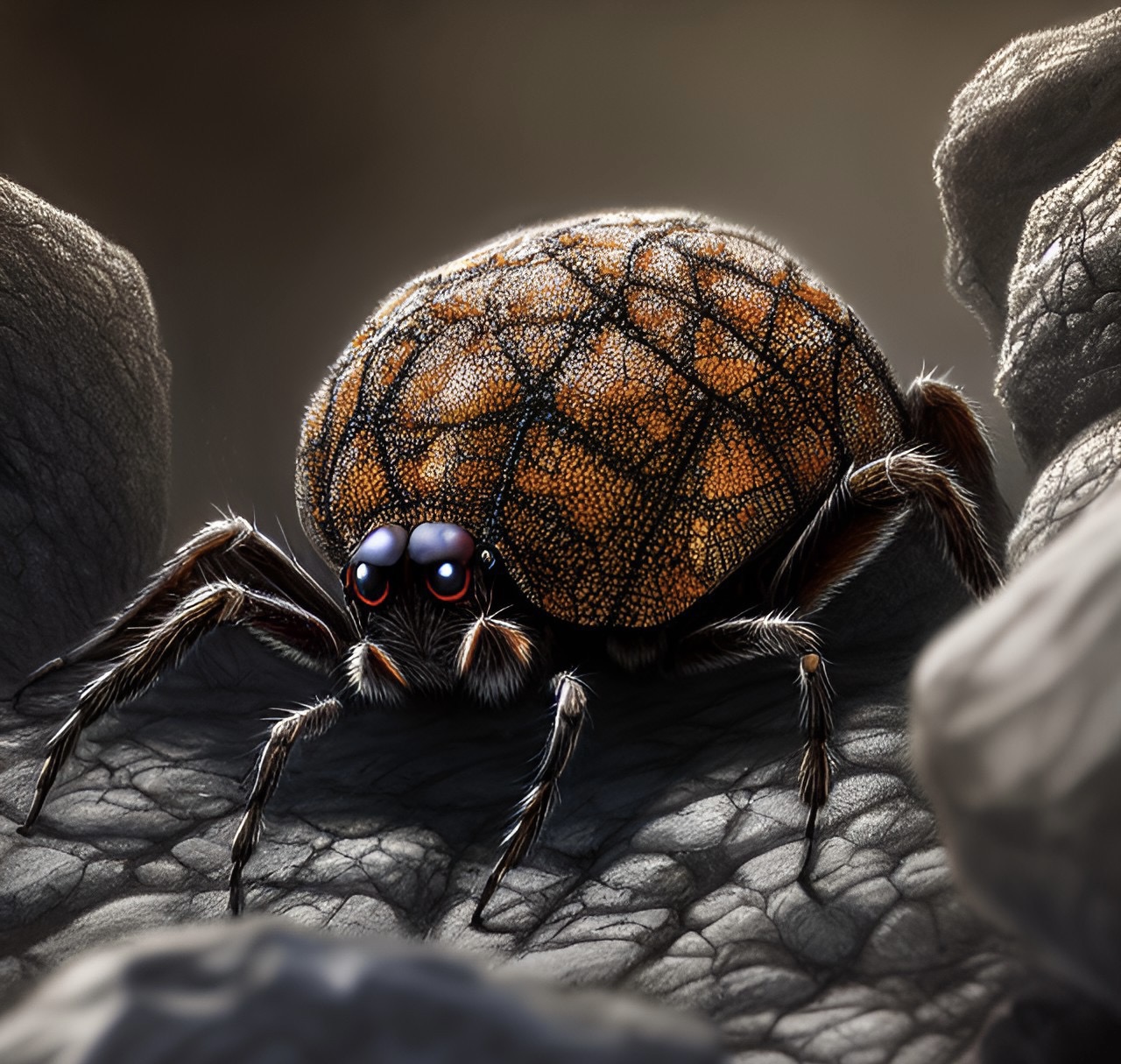Shrapnel Spider
Basic Information
Anatomy
The shells of these unique bugs are arrayed with fault lines designed to break and jagged angles. This is because of the Shrapnel Spider’s unique self defense mechanism of using infested mixtures of gasses and chemicals to explode when threatened, sending jagged bits of exoskeleton out in every direction to hopefully shred its attackers. The 8 legs propel them around their desired terrain of rocky areas, where the perch atop rocks to search for prey with their dual burgundy eyes. For whatever reason, adult shrapnel spiders will almost never explode at night/when they cannot see, possibly for fear of damaging their eggs which they often stay near.
Genetics and Reproduction
The egg clusters laid by these creatures are, interestingly, also capable of self destruction, exploding when they experience too much jostling.
Ecology and Habitats
Shrapnel spiders prefer rocky, often mountainous environments, but also live in certain forest areas fairly often.
Dietary Needs and Habits
Contrary to their violent self defense mechanism, these animals eat mostly other smaller bugs and plants, actively fleeing any creature bigger than themselves.
Additional Information
Uses, Products & Exploitation
The Fatalins regularly utilize these creatures as improvised biological grenades, wreaking havoc with them most notably in the Fatalis War. They collect these bugs (hopefully) without causing them to explode by sneaking up on them at night while they are dormant and quickly dropping an opaque sack over their bodies, the spider’s hesitance to self-detonate when they cannot see their target allowing this to be a, while certainly still dangerous, viable strategy. Once collected, Fatalin warriors will then keep the bugs in pouches, quickly drawing them out and flinging them at their targets when ready, the bugs usually exploding a few seconds after they are thrown. At night this is less reliable due to their tendency to not explode at night as previously stated, so often times a rope is tied around the animal and lit just before it is thrown, creating enough artificial light for them to detonate.
Lifespan
2 years
Average Height
5”
Average Weight
1.75 lbs
Average Length
6” diameter
Geographic Distribution



Comments